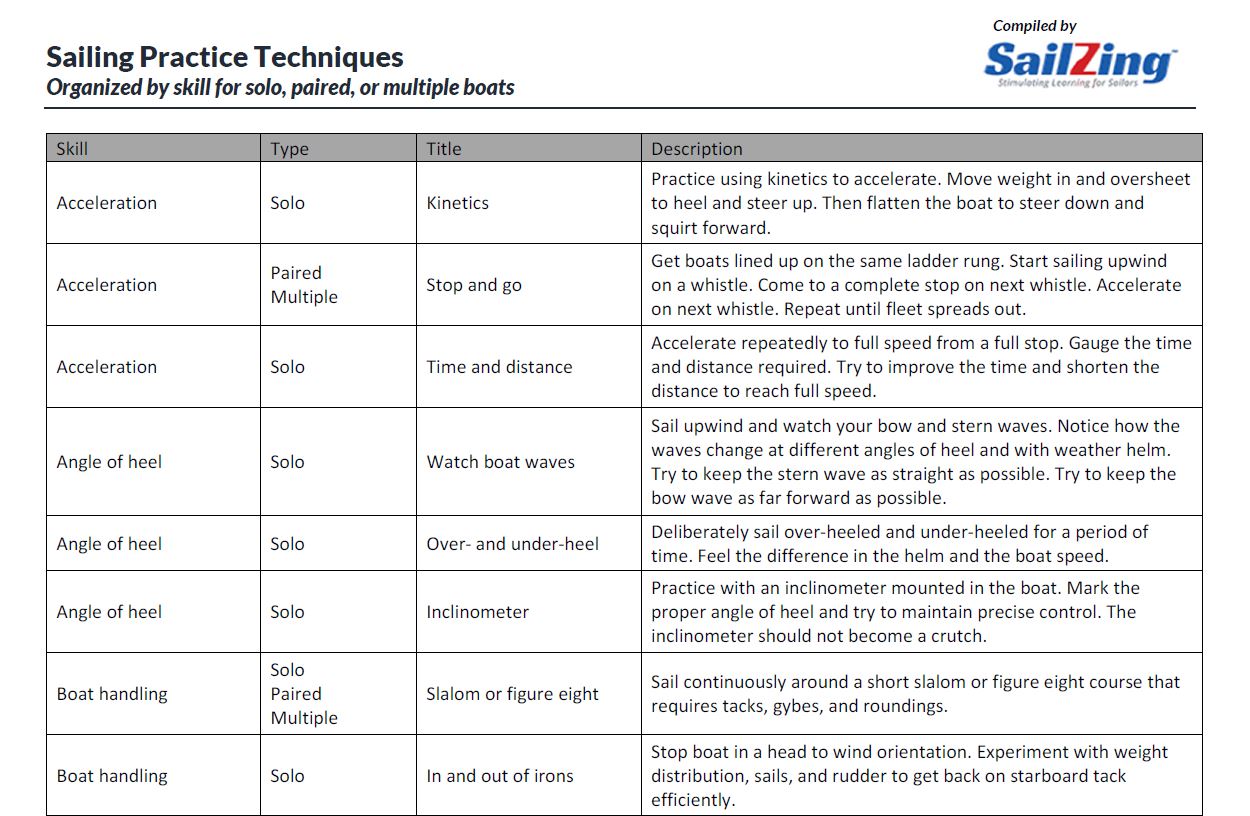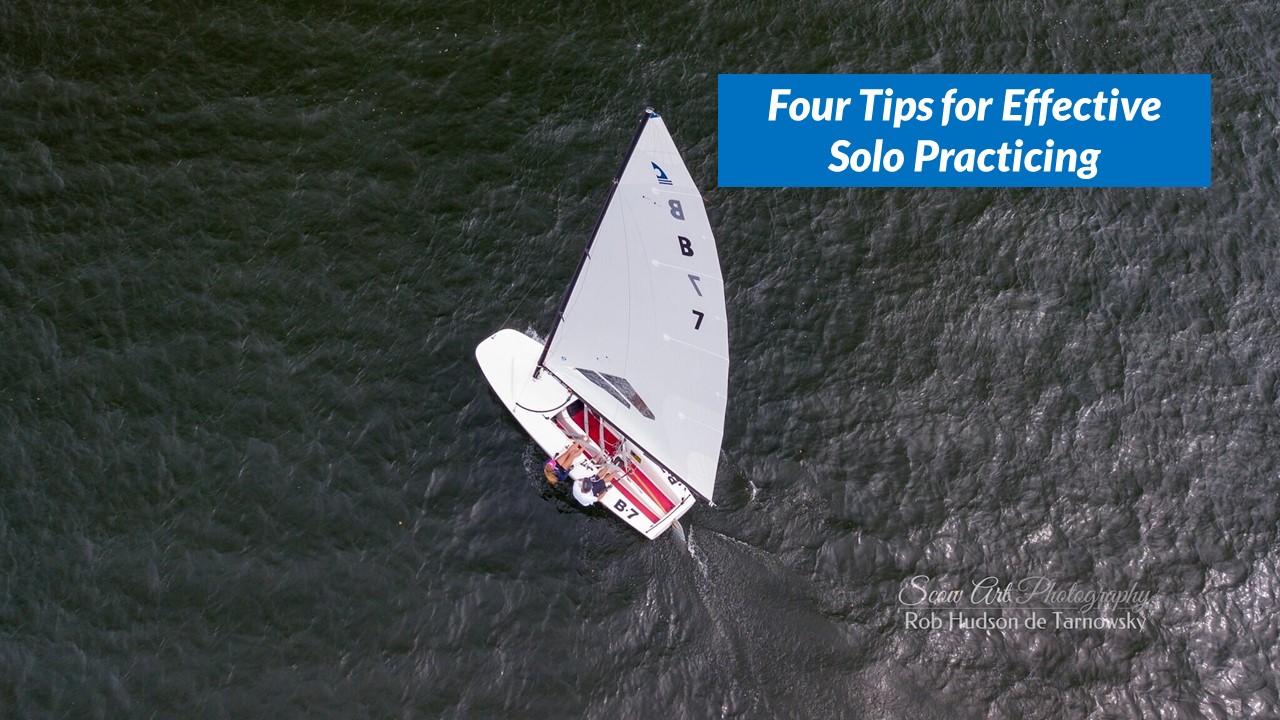A well-organized, two-boat testing program is the best way to make advances in boat speed.
Mark Reynolds
While racing, it’s hard to isolate the factors that contribute to differences in boat speed. If you have the time and patience, two-boat testing in controlled conditions lets you experiment and learn what’s fast.
Many sailors approach two-boat testing too casually, which limits the benefit. A few essential elements are required; you can add sophistication as time allows and your goals change.
We compiled advice on how to use the technique from three experts: Dave Dellenbaugh in Sailing Breezes, Greg Fisher in Sailing World, and Mark Reynolds in mysailing.com.au. We also added our perspective on the variety of ways to use it.
Determine Goals
First, decide what you want to accomplish. Top-level sailors often use two-boat testing to identify fast settings for sail trim and rig tune, but you can also use the process to improve basic helming and trimming, compare sails, or even to compare different boats.
For example, if you simply want to improve your helming technique, you might sail against a faster sailor and try different techniques until you find what works.
Similarly, if you think your boat and sails are set up wrong, you could have a “faster” sailor sail your boat against a control boat. Or, if you want to compare two different sails, you can test the sails against each other on different boats or with different skippers.
Make a Plan
Before you go out, decide how you’ll do the testing. It’s a lot easier to plan on land than it is on the water. Because the differences will be subtle, your plan needs to include ways to reduce uncertainty and make the test systematic.
Reduce Uncertainty
To achieve a degree of certainty in the results, the boats must be somewhat evenly matched, sail in the same wind, with relatively steady conditions, and without any tactical advantages. These are discussed in more detail below.
Evenly matched
Select a boat with similar skill level, crew weight, age of sails, cut of sails. Do side-by side tests to confirm that boat speeds are similar before you start testing the variables.
The two boats don’t have to be exactly equal in speed. If one boat is faster, you can consider the speed difference as the baseline and see how it changes as the test progresses.
Same wind
To ensure you’re sailing in the same wind, the boats have to be close to each other (within 2-3 boat lengths) and not disturbing each other’s air. The picture at the top of this article shows a good starting position.
Most sailors start out a test in this condition, but then keep going when one boat gets ahead. This wastes time. Get back together in the starting position if any of the following occur:
- Windward-leeward separation of more than 3-4 boat lengths
- Leeward boat gets ahead by more than 1/2 boat length
Steady conditions
If you want to test subtle factors, such as rig tune, your best chance for effective testing is in steady wind and wave conditions. Wind shifts, large puffs and lulls, or inconsistent wave patterns may not affect boats equally.
Tactical advantage
Often in a side-by-side situation, the leeward boat will gain because she has more options to bear off or pinch up. This does not need to be the case. With adequate boat speed, the windward boat should be able to hold a lane as long the leeward boat is not back-winding her and she has enough room to bear off when needed.
To control for this, do several trials until each boat can hold its lane from either the windward or leeward position.
Test Systematically
Once you’ve established a repeatable baseline between the two boats, start testing changes in accordance with your goals. To ensure confidence in the results, you need to control the changes and ensure repeatability of the results.
Control changes
Designate one boat as the test boat and the other as control boat. The test boat will make one change at a time; the control boat won’t make changes. If you find a change that makes the test boat faster, then both boats should make that change before going on to test another change.
Ensure repeatability
Do 3-4 repetitions of several minutes side-by-side sailing with each change. Look for consistency. If you can’t get consistent results, then the change probably didn’t make a difference in your speed.
Analyze the Results
One of the benefits of two-boat testing is the opportunity to analyze and learn from each other. Here are several ways to enhance your learning.
Discuss between trials
If you’re testing upwind speed, discuss the results with your testing partner as you sail downwind after each set. Be honest about the factors that may have affected the test. VHF radios may make the conversations easier.
Use video or photography
Post-testing review of video or photos is a great way to spot differences that may have contributed to a difference in speed. See our post Boat Speed Comparison, for an example.
Remember or record settings
If you’re testing more than a few factors, you’ll need some way to remember the settings you tried and the results. Use wet notes or a voice recorder.
Debrief
A final debrief with your testing partner will help solidify the learning from the session.
Upwind Strategy and Tactics – Sail in Clear Air – describes the backwind zone
Sailing Practice Techniques: Here are 60 to Try




